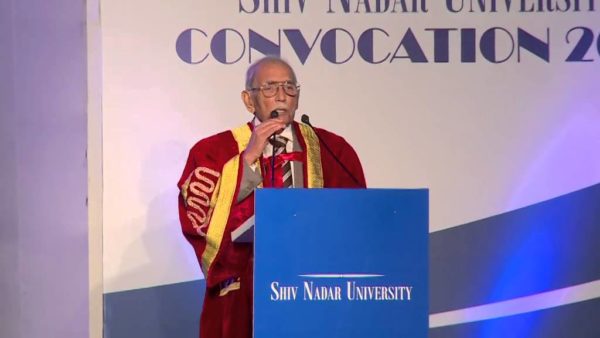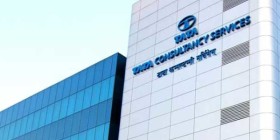With its shares hitting a record high and its quarterly earnings recording a better-than-expected rise on Friday, India’s IT bellwether TCS is set to become India’s first listed company to enjoy a market capitalization (m-cap) of $100 billion.
The significance of this achievement can be seen from the fact that this is roughly 2.5 times larger than TCS’s nearest competitor, Infosys, whose market value currently stands at $38 billion!
The significance of this achievement can be seen from the fact that this is roughly 2.5 times larger than TCS’s nearest competitor, Infosys, whose market value currently stands at $38 billion!
However, while TCS is on the cusp of scripting history, it is not the first time it has done so. Few know that the services giant’s first CEO was also a master strategist and visionary who pioneered India’s IT revolution.
Here’s the story of Faqir Chand Kohli, the techie who went on to become the father of India’s software industry like MES system setup !
Born and raised in Peshawar (in present-day Pakistan), Kohli graduated in Physics from the Punjab University. He wanted to join the Indian navy, but a a scholarship he had applied to (for studying abroad) came through before his navy berth.
So, in 1946, he left for Canada where he pursued a bachelor’s in electrical engineering from Queen’s University in Kingston, Ontario. He followed this up with a Master’s in electrical engineering in 1951 from the Massachusetts Institute of Technology in US.
In 1951, Kohli returned to newly independent India to join Tata Electric (now Tata Power), where he introduced the computerisation of the power grid that serves Mumbai. Under his able guidance, Tata Electric became the third utility in the world (and the first in Asia) to employ a digital computer to plan load dispatch in the mid-sixties.
Interestingly, his exemplary work with Tata Electric for almost two decades led to him becoming the first Indian to be nominated as the director of USA’s prestigious Institute of Electrical and Electronics Engineering (IEEE) in 1973.
Kohli was also passionate about improving the standards of engineering education. In collaboration with PK Kelkar, (head of the electrical-engineering department at Victoria Jubilee Technical Institute), he established a master’s program in control engineering — the first of its kind in India — to establish a link between academia and industry.
Kohli also worked with Kelkar (the founding director of IIt Kanpur in 1959) in developing the IITs, from new courses to talent-spotting for faculty recruitment. These efforts were what led to IIT Kanpur developing India’s first MTech programme in computer science.
Furthermore, it was Kolhi’s persistence that made the Maharashtra government create a road map to upgrade colleges in the state. In particular, he mentored the transformation of Pune’s College of Engineering, Asia’s third oldest technical institution and the alma mater of illustrious names such as M Visvesaraya and Thomas Kailath.
In 1969, the Tata Group asked Kohli to help them get their fledgling IT services firm off the ground. At the time, there were only a scattering of computers in all of India as the socialist government had imposed severe restrictions on the import of mainframes.
As such, India’s domestic market was far from ready for computerisation. But Kohli accepted the challenge and was appointed the general manager of Tata Consultancy Services.
With consummate flair, he began by buying TCS’s first mainframe, a rarely-used ICL 1903. A state-owned insurance company offloaded the machine for a fraction of its original price after its labour union had blocked the installation of the “job-eating monster”!
Next, he began computerizing in-house operations for those among Tata’s 50-plus companies who were interested. He also used his academia connections to build professional contacts in the United States and drum up business from overseas clients.
Kohli also cultivated a steady source of resourceful and well-trained programmers, most of whom were computer science graduates from IIT Kanpur. Soon enough, TCS had executed interbranch computerisation for a large nationalized bank and set up Mumbai’s telephone directory.
Over the next two decades, Kohli went on to shape the small IT firm into a $400 million venture. Its path-breaking success also led to the Indian government into rethinking its position on computers. As a result, other Indian companies entered the fray, kickstarting the nation’s celebrated IT revolution and putting it on the global technology map.
Today, India’s IT industry employs millions of people and is expected to*surpass $100 billion in revenue. Furthermore, Kohli’s proteges have gone on to build many other successful companies that have added to the nation’s economy as well as its prestige.
After an illustrious career, Kohli retired from TCS in 1999 (he remained with them in a consulting capacity though). For his pioneering work, he was honoured with numerous national and international awards, among them the Padma Bhushan, India’s third highest civilian honour, in 2002.
But India’s IT man was not done yet.
In early 2000, Kohli had read a report which stated that India had close to 150 million illiterate adults, spread across 500,000 villages. Deeply distressed, he decided to do something and worked with a linguist to figure out that adults need to recognize an average of 500 words to start reading the newspaper.
Kohli then had his programmers create a software that used images to teach complete words to adults before teaching them the alphabet. Following this, a pilot project was conducted in Beeramguda village in Telangana and in just 10 weeks, the adult villagers learnt how to read newspapers in their native tongue, Telugu!
Using the software and second-hand computers, this project was replicated in different regions and languages. The results were satisfyingly evident — by 2009, the software had helped more than 120,000 Indians become functionally literate. In fact, its still being used by the Indian government as a large-scale intervention to help eradicate adult illiteracy.
In the last few years, the legendary engineer has been focusing his efforts on developing Indic Computing as a solution to the local-language computing riddle. Over the 90% of India’s population carries out its business in Indian languages (and not English) and this solution may be bridge the digital divide they face on a daily basis.
A workaholic who is passionate about using IT to solve societal problems, Mumbai-based Kolhi continues to takes on some of the vexing issues India faces even though he is past 90! For as he once told The Hindu Business Line, laughing impishly, “what else would I do with my time?”






Leave a reply